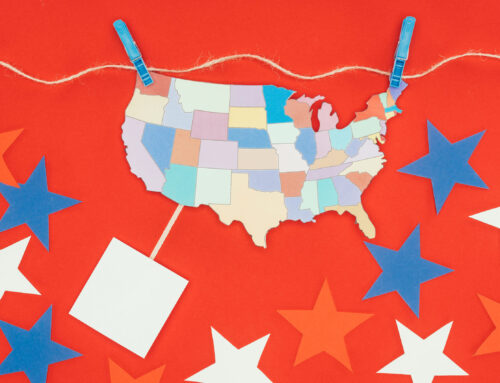Yesterday and today, we welcome guest blogger Sean Kosofsky to explain an important marketing concept for all nonprofits to understand: Your Unique Value Proposition (UVP). What is it and how do you get one? Read on! ~Kivi
Guest Post by Sean Kosofsky
In part 1 of this two-part blog series, we covered the first few steps of creating a Unique Value Proposition statement. Those included figuring out your audience, your products, and your audience’s pain points. Now, we will cover the next few steps so you can create a formal UVP statement.
Step 4: Identify and Quantify the Benefits

The fourth step is to identify and quantify the benefits of your product. Remember to think about benefits, NOT features. Make a list of how your offerings make people’s lives or the world better. Simply listing what you do is less effective. For example, you don’t “have a homeless shelter;” you “provide warmth, security, and stability to people in distress.”
Step 5: Identify the Most Compelling Benefits
The fifth step is to identify the three most compelling benefits. You will still use multiple benefits in your final UVP statement, but by boiling it down to three, you are focusing and getting to the heart of your true UVP. Describe what makes these benefits valuable. Put yourself in the shoes of the person receiving the benefits when thinking about the value. Does it save money, time, and hassle or transform people’s confidence? Does it help people earn more, save more, or create prosperity?
Step 6: List Your Competitors
In step 6, list your “competitors” and the competitive alternatives to your program. In nonprofits, we don’t like to think of other nonprofits as competitors, but for the purpose of this exercise, indulge me. Create a list of who in your donors’ minds may already be doing what your organization does. Could it be the government? Another nonprofit? A business? A woman online who does something similar to you, but free? It’s easy to resist this part of the exercise, but it is helpful.
Step 7: Link Your Benefits to the Pain Points
The seventh step is to link the benefits of your program to the pain points of your donors. But specifically, explain how you address the pain points better than other entities, or at least uniquely. Here you must differentiate yourself as the preferred provider of this value. Even if you believe what you do isn’t unique, put yourself in the position of your clients. They may not know about any other alternative, so to them it is unique. Notice a theme? Put yourself in the eyes of your audience to uncover the benefits, the value, and how your programs solve a need. Be unique in the eyes of the donors and beneficiaries.
So, after you know your target audience, your product, and the benefits it provides in solving a pain point, you think about the value this provides and then differentiate.
The Final Step: Drafting Your UVP Statement
The final step is to turn this into a UVP statement. The UVP is not a tagline or gimmick. It can be half a page, but it should be very simple. It normally will have:
- A headline
- A few sentences of description to back up the headline
- Three bullets explaining the benefits of your program
- A visual element (image, video) that reinforces your frame
Now that you have your UVP written, there are some things that can enhance it, depending on the format. If you are putting this online or in marketing materials, you can enhance the power of your UVP by adding “social proof.” Social proof is evidence from the world that what you’re saying is true. Here are some examples of social proof:
- Testimonials
- Statistics/data
- Media coverage
One final way to enhance your UVP statement is to further address other objections.
In the private sector, you might see terms like “free shipping,” “money-back guarantee,” or “no contract needed.” These help people overcome their objections or apprehensions about buying. In the nonprofit sector, versions of these may be “confidential testing,” “no judgment,” or “fits with your schedule.”
After all of this is done, test it out on your audiences. Refine it. Test it again.
By creating a strong UVP statement, your organization can bring in new donors and ensure that your existing donors are renewing year after year, or even making larger gifts over time. Become indispensable in your sector by explaining your UVP!
Sean Kosofsky is The Nonprofit Fixer. For 27 years, he’s helped and led nonprofit organizations and campaigns. He transforms organizations, inspires people to action, and magnifies their impact. For more help, download Sean’s free cheat sheet, Create a Nonprofit Unique Value Proposition.





